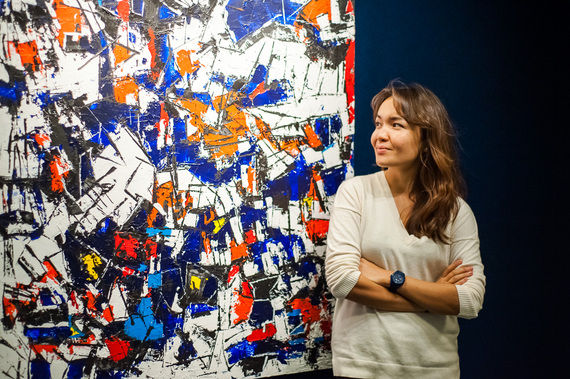
In her series Windows – Liberated Canvas, Sholpan Sharbakova pays homage to the emancipatory power of abstract art, further pursuing its logic of perceptive desintegration. In direct opposition to the academic convention of streched canvas, she removes the structure from its frame and gives a wholly different meaning to the aesthetic idea of the ‘window’. While in Alberti’s theory, it opens out onto a narrative representation, putting in order shapes and channelling the vision, here the window offers passage into a landscape without any fixed point. Her artistic gesture is somewhat reminiscient of avant-garde projects, but her intention is less conceptual than it is sensitive. Not as radical as Claude Rutault’s turning of paintings against the wall, or Steven Parrino’s Misshapen Canvases, nor as surgical as Lucio Fontana’s punctures, Sharbakova’s treatment of material instead echoes the maverick spirit wich drives her creativity. On the one hand, each ‘Window’ is an invitation to take flight, to find in flight points some opportunities to walk in a path towards contemplation. On the other, detached from their stretchers, folded, ragged or sagging surfaces draw attention on the dynamism of pictorial texture. With a delicious irony, she both relates crumpled canvas to hanging drapes and refers to the classical art of draping - in this latter respect, her series is closer to Manzoni’s achrome canvas executed in textile fibres. Her work can thus be interpreted as a way of confronting the vitality of inert material and the materiality of the living being.
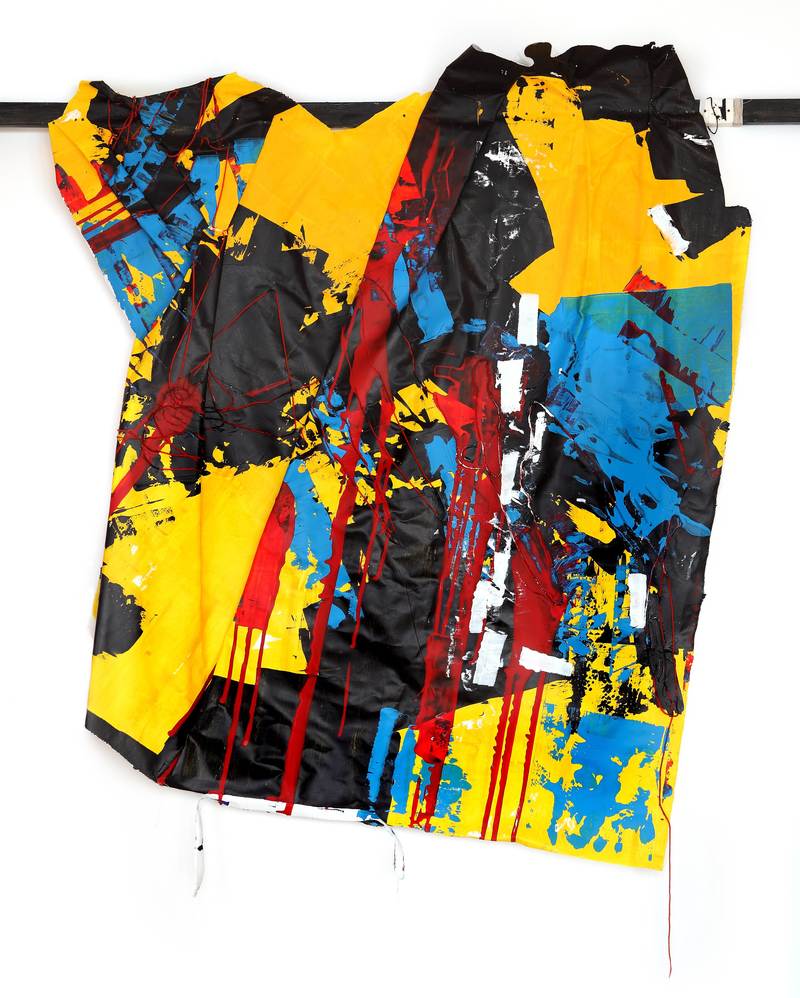
Windows - Liberated Canvas Series, No.1
Sholpan Sharbakova intuitively draws this correspondence between spiritual and physical bodies from her musical approach. Although a professional pianist rather than a composer, she nonetheless displays a great skill and ease in her pictorial composition. In continuity with modernist theories (Kandinsky, Mondrian, Klee…), which consider painting as a musical code, the emphasis of her work is on the delicate art of placing colors and shapes in relation to one another. The chromatic effects are not, however, meant to embody some universal language of life, but instead seek to express the raw and singular force of the artist. Each piece, kind of pictorial score, is constructed along emotional lines, as though she’s attempting to give form to a particular state of mind, endorsing through her painting Schopenhauer’s assertion that “music is thus by no means like the other arts, the copy of the Ideas, but the copy of the will itself”. Overlaid coats of different tonalities channel ultimately a nervous force, providing a mysterious atmosphere which we can describe as a wild lyricism or a crude poetry.
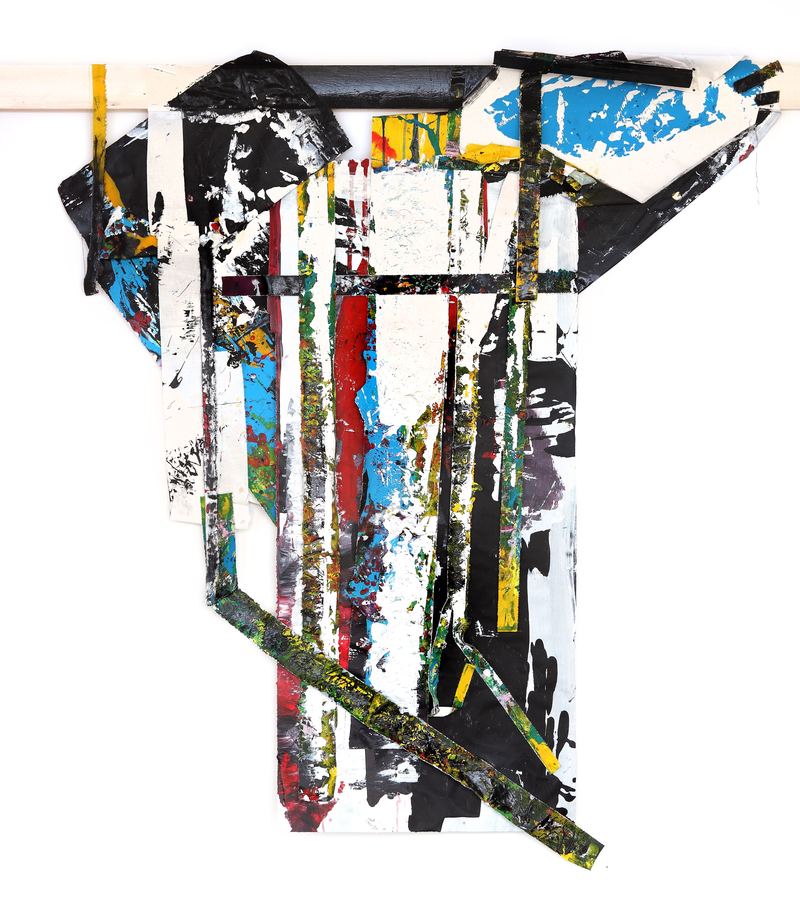
Windows - Liberated Canvas Series, No.4
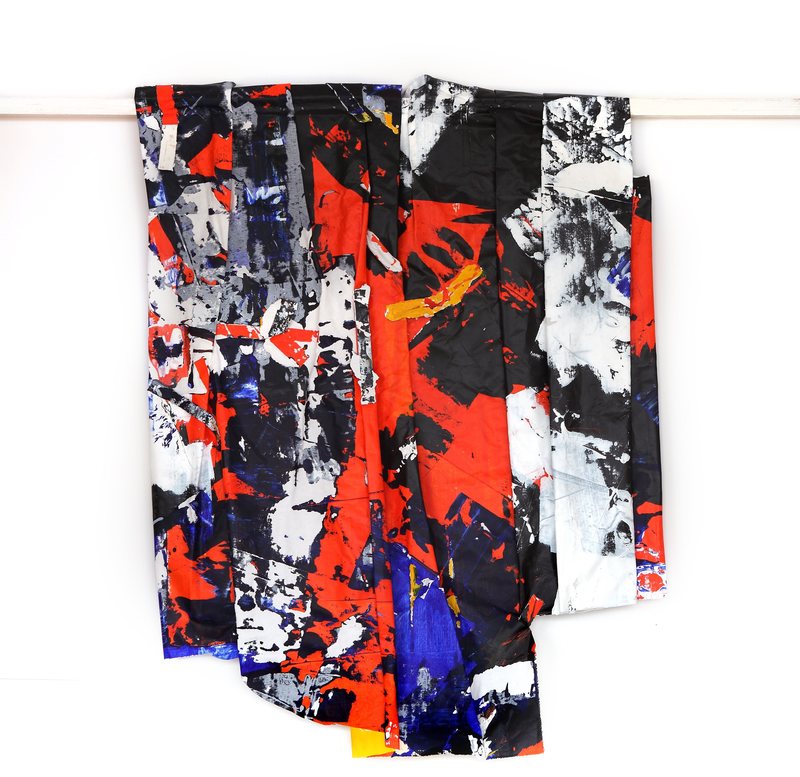
Windows - Liberated Canvas Series, No.2
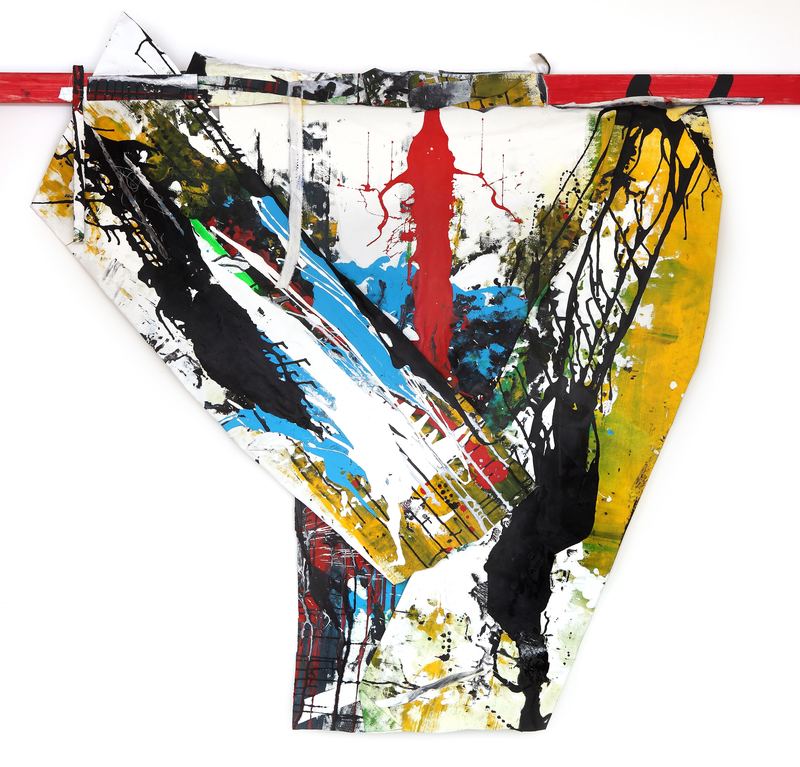
Windows - Liberated Canvas Series, No.6